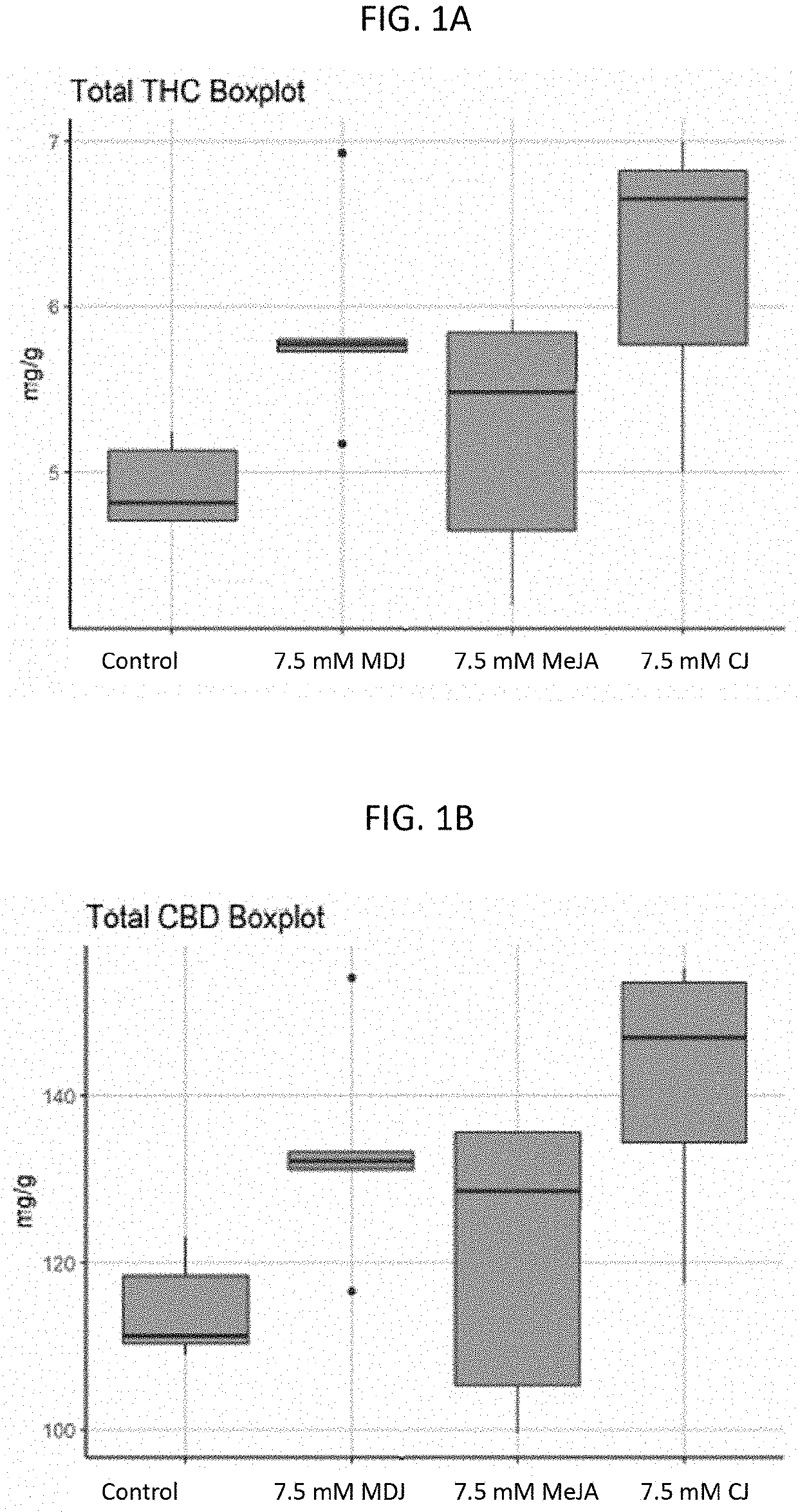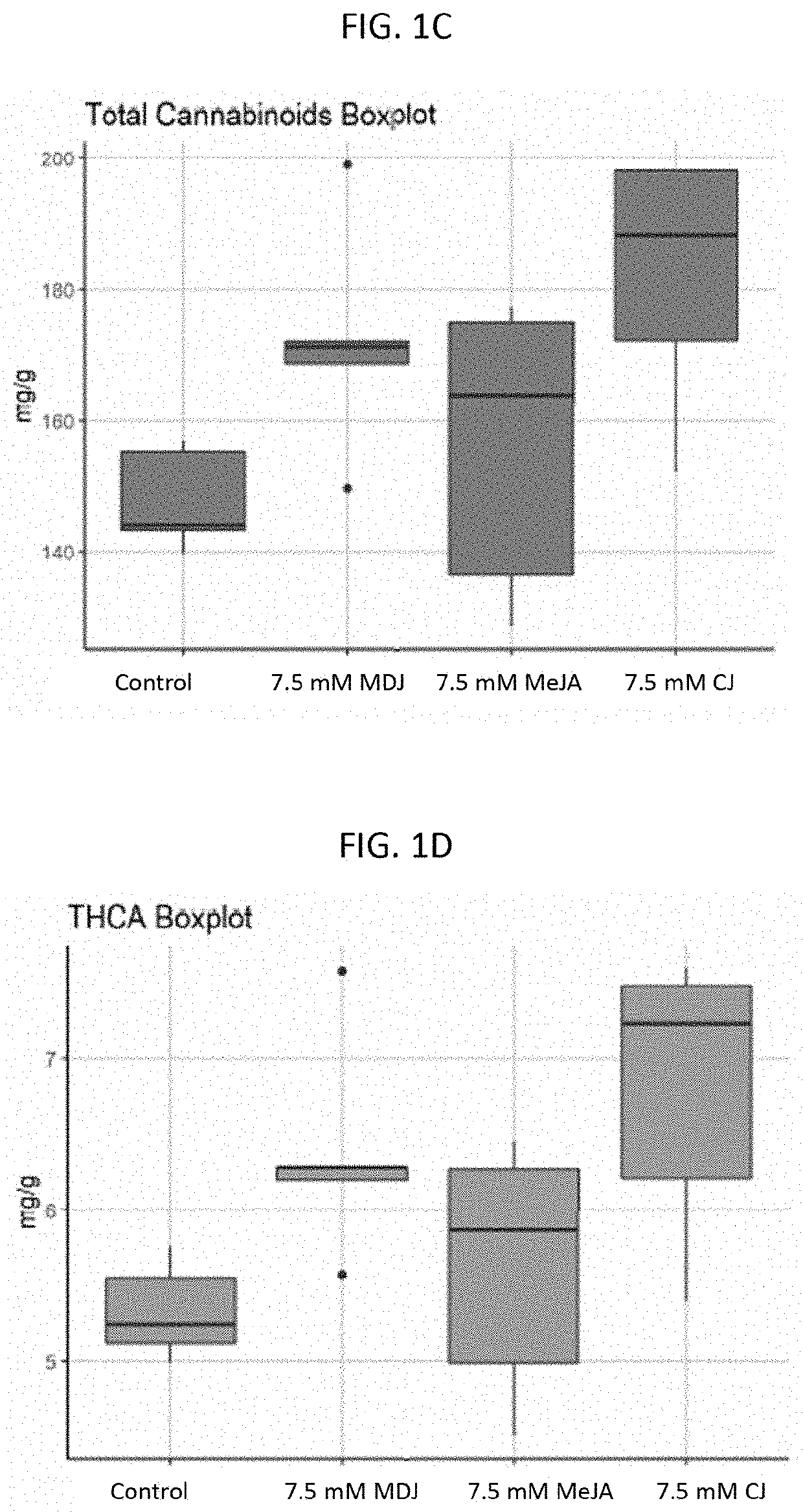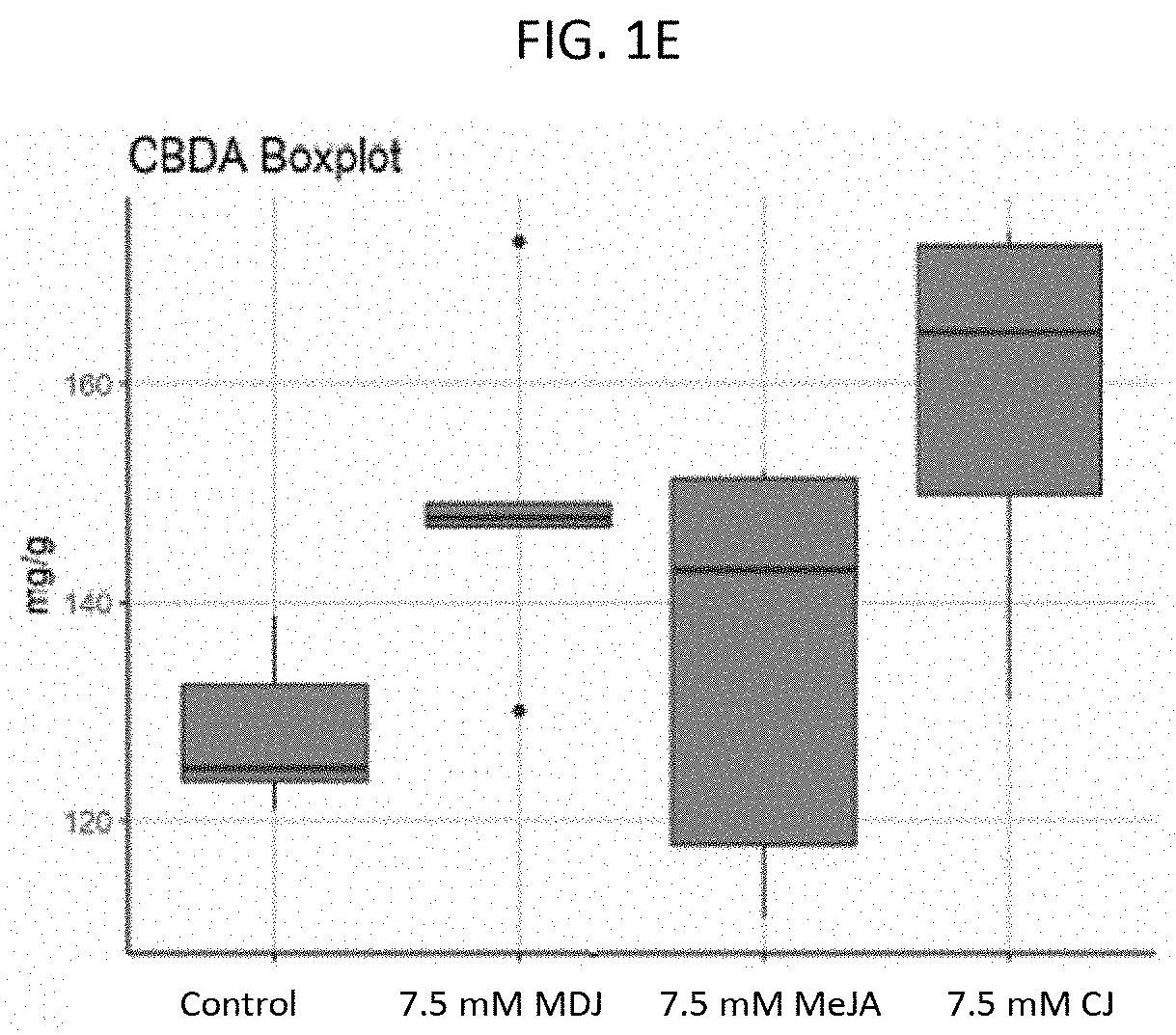Methods and compositions for altering secondary metabolites in plants
a technology of secondary metabolites and compositions, applied in the field of biochemical compounds, can solve the problems of large-scale production of plant products that are not adequately produced, and achieve the effect of reducing the number of applications and improving the quality of the produ
- Summary
- Abstract
- Description
- Claims
- Application Information
AI Technical Summary
Benefits of technology
Problems solved by technology
Method used
Image
Examples
example 1
on of MeJA to a High Fiber Hemp Variety Alters the Metabolome
[0191]The efficacy and effectiveness of an eliciting composition and methods of use to alter secondary metabolite production were tested in a controlled environment with a commercial certified hemp varietal ‘Bialobreszkie’ (Bija Hemp, Denver, Colo., USA). Notably, ‘Bialobreszkie’ is a relatively low metabolite-producing hemp variety due to its predominant use as a fiber and grain variety, with total cannabinoid content generally far less than 10% by weight. This is in comparison with high metabolite-producing hemp varieties that typically yield greater than 10% by weight total cannabinoids.
[0192]A non-targeted semi-quantitative metabolomic analysis was conducted to provide relative values for each detected analyte (i.e., compound) rather than absolute quantification, but with much greater detection limits than typical quantitative analysis provides. Additionally, the non-targeted nature allows essentially every compound th...
example 2
on of MeJA, MDJ, and CJ to High-CBD Hemp Varieties Alters Cannabinoid and Terpene Production
[0221]In Applicant's previous experiments (Example 1 above, data figures in provisional application 63 / 057,549, incorporated herein by reference, and US Patent Application Publication No. 2019 / 0059371), applications of MeJA demonstrated significant bioactivity and biostimulation regarding the production of secondary metabolites like cannabinoids. However, MDJ is not known to have any significant bioactivity in planta and is not an endogenously produced phytohormone in cannabis, so it was unknown whether MDJ would afford the same functionality as MeJA. Similarly, CJ has likewise been relatively under-investigated as a plant elicitor despite being a decarboxylation product of Jasmonic Acid. Here, the effect of MDJ and CJ were analyzed (in addition to MeJA) in order to determine any difference in the effect of these treatments on field-grown high-CBD hemp varieties.
[0222]A hemp field experiment ...
example 3
e Foliar Applications of MeJA or MDJ on High-CBD Hemp Varieties in the Morning or Evening Alters Cannabinoid and Terpene Production
[0230]In previous foliar application experiments, plants were sprayed until the leaves were dripping. In order to assess the plant physiological response to low-volume foliar applications of two jasmonate elicitors, methyl jasmonate (MeJA) and methyl dihydro-jasmonate (MDJ), an outdoor experiment on field grown, high-CBD hemp was designed and performed during the summer of 2019 using an unmanned aerial drone as the application device. A single high-CBD hemp variety, “Cherry” (CBDRx, Longmont, Colo.) was used in an organic field plot in Pueblo, Colo., which was subdivided into four spatially separated quadrants of approximately 0.5 acres each as determined by drone and GPS mapping. Each 0.5-acre quadrant was assigned a treatment group, and the middle area of the entire plot, approximately 1 acre in area, was used as a “control” section of the field. Plant...
PUM
 Login to view more
Login to view more Abstract
Description
Claims
Application Information
 Login to view more
Login to view more - R&D Engineer
- R&D Manager
- IP Professional
- Industry Leading Data Capabilities
- Powerful AI technology
- Patent DNA Extraction
Browse by: Latest US Patents, China's latest patents, Technical Efficacy Thesaurus, Application Domain, Technology Topic.
© 2024 PatSnap. All rights reserved.Legal|Privacy policy|Modern Slavery Act Transparency Statement|Sitemap



